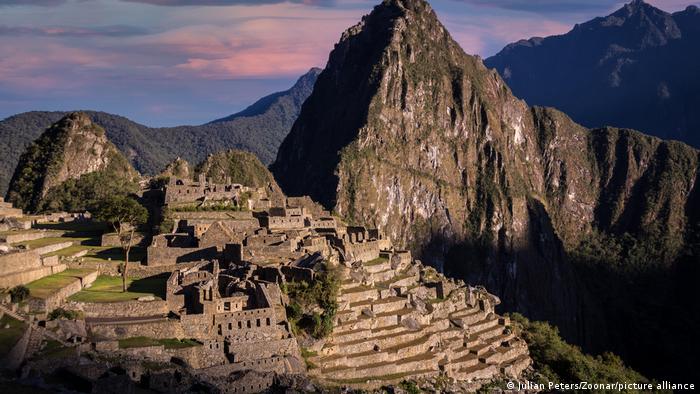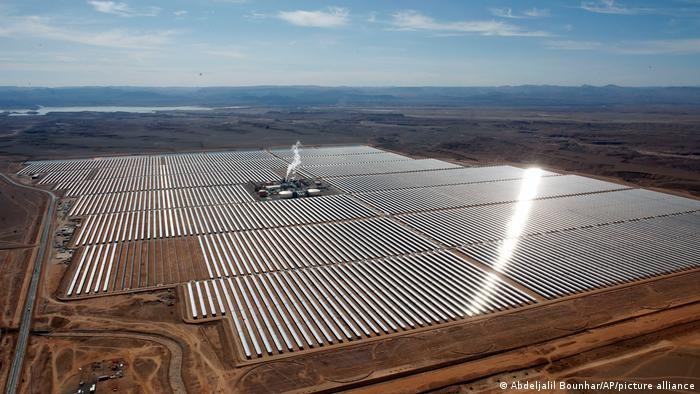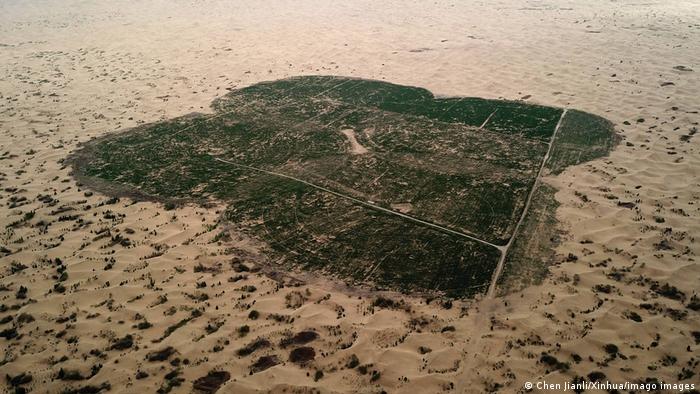The fastest growing desert on Earth, stretching across Mongolia and China’s northwest, is the Gobi Desert. It is already 1.2million square kilometers in area, but the Gobi desert adds an additional 6,000 each year.
As it expands, it eats grasslands and swallows whole villages. It also transforms vast swathes land fertile into an uninhabitable wasteland. Tens of thousands have been forced from their homes and only a handful of thousand can live in the region.
Natural processes can cause desertification, which is the process in which fertile soil turns into a desert. However, humans play a crucial role in its rapid spread.
There are four main causes of soil degradation worldwide: Excessive water use in industrial agriculture, more frequent severe droughts, deforestation and overgrazing by livestock.
The destruction of once fertile, lush landscapes is threatening the livelihoods of over one billion people around the world and the survival of millions more species. Projections suggest that by the middle of this century, a quarter of all soil on Earth will be impacted by desertification.
It’s a grim outlook. The good news is that this can be reversed.
Enjoy torrential rain in desert
Near Mecca is one promising solution. It’s the Al Baydha Project. Experts in desert agriculture developed a system to bring the desolate soils back into life using torrential rain.
When it rains in Saudi Arabia, a huge amount of water often falls in a short space of time as was the case in April 2021 when entire cities were briefly flooded. It’s not easy for soils to store all the water that comes at once.
“We thought, If we can get that water in the ground, it might be a sustainable water source even if it doesn’t rain for 20 years,” Neil Spackman, an expert on regenerative agriculture and former director at the Al Baydha Project, said.
Together with villagers living in the area, the agricultural experts built dams and terraces along the rock walls that border the valley in western Saudi Arabia, along with kilometer-long ditches. When it rains, water collects and is directed to the areas it is needed. It can also seep into the ground slowly. This type of irrigation works everywhere and was used centuries ago by the Incas from South America.
To kickstart the natural cycle in Saudi Arabia, experts initially used artificial irrigation. The trick was to put significantly more water into the soil than was taken away. The soil was once just sand, stone. But native trees, shrubs, grasses and grasses grew again, even after enduring a prolonged drought without irrigation for 30 months.
How renewable energy makes it rain
North Africa, not far from Saudi Arabia is trying to stop desertification.
The Sahara, which covers more than nine million square kilometres, is the largest desert on Earth. It continues to grow in certain areas nearly 50 km per year, just like the Gobi. The Sahara is surrounded by arid areas that are alive, though not for very long. Desertification has caused the destruction of fertile land by humans to make them more endangered than any other part of the world. Environmental degradation is a constant threat to land ownership and poverty.
These are the ideal solutions to stop the desert from taking control.
How? It rains.
It works this way: The black surface of solar panels heats the air and then it rises higher into atmosphere. The air rises due to the rotation of thousands wind turbines. “These air masses cool down when they reach higher elevations. […]It’s colder so the moisture condenses and becomes rain and falls down,” says Safa, a University of Maryland physicist who is co-author of a study.
Experts estimate that one fifth of the Sahara Desert could be used for solar and/or wind farms. This would bring about five centimeters of rain per year to the south of Sahara. It may not sound like much but it could increase plant cover by 20% in the region and boost agriculture greatly. It would be a win-win situation for people and the environment.
Mote claims that a large-scale solar and wind farm could produce four times more electricity per year than the world consumes today. This could help African countries become more resilient. The physicist believes that the huge implementation costs of $20 trillion (17.5 trillion) could be managed if there is political will.
Reversing desertification
China is currently testing a nature-based method to make the desert fertile once again. It’s already been a success.
According to China’s State Forestry and Grassland Administration, China’s deserts were growing at 10,000 km per year just a few decades back. They are now shrinking by more that 2,000 km per year.
But how do you do it?
People began planting trees in Kubuqi Desert, northwest of Beijing, in 1988 to protect the transport routes from a salt mine. This has been one of the most successful reforestation programmes in the world over the past decade.
Special water jets were created to plant trees in the sand dunes, rather than planting them in the traditional way. These jets are able to drill holes in sand and water young cuttings simultaneously. Barron Joseph Orr (Lead Scientist for the United Nations Convention to Combat Desertification) says that this has cut down the time it takes to plant a tree.
Kubuqi’s farmers also place straw rolls on the dunes to protect the young plants against the wind.
The new grasslands serve as grazing areas and cultivation areas for farmers who grow liquorice, and other herbs that do well in arid environments and are highly sought-after for traditional Chinese medicine.
The Kubuqi Desert’s greening has had positive effects as far as Beijing, 800 km away. Since then, air pollution from sandstorms is significantly reduced.
Can technology be used to stop desertification?
It is possible for soil and vegetation to be revived and water cycles to be restored using either nature-based or high-tech methods.
However, the effort and costs involved are too high for all of the world’s deserted areas to be transformed into healthy soils.
Experts say the only way to prevent fertile soils from drying out and deserts from spreading is to stop the relentless exploitation of soils and overuse of finite water sources.




